14. Castle of Sand (Yoshitaro Nomura, 1974)
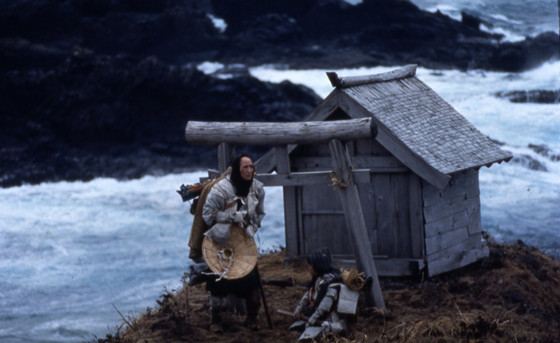
The film is based on Seicho Matsumoto’s novel “Inspector Imanishi Investigates”. It tells the story of two detectives, Imanishi and Yoshimura, who are assigned the murder case of an old man who was found bludgeoned in a rail yard.
Yoshitaro Nomura directs a police procedural film that highlights the somewhat surrealistic efforts of the two detectives to find the perpetrator. His distinct trait of including sequences on trains is once more present, as the two protagonists travel all over Honshu before returning to Tokyo.
The surrealistic element is the one that gives the movie its large duration (143 minutes), since it includes a sequence where the perpetrator performs his music composition in front of an audience.
Tetsuro Tanba as Imanishi and Go Kato as the suspect give great performances.
13. The Demon (Yoshitaro Nomura, 1978)
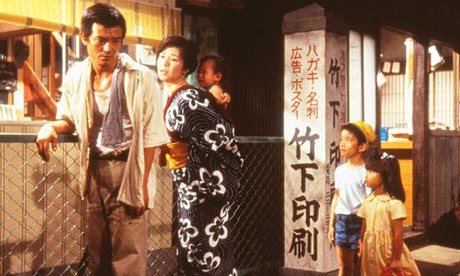
Based on the homonymous Seicho Matsumoto novel, “The Demon” was one of the most shocking films of the decade, as it challenged the limits of what can be shown on screen.
Sokichi, a philandering printer, finds his sins facing him when his mistress dumps the three children they had together in his house and leaves. His wife, Oume, is infuriated by the situation and takes out her anger on the children, while Sokichi tries to find a way to get rid of them.
Nomura directs a film that is shocking due to the amount of child abuse depicted on screen, and the realism of it, in an unprecedented tactic for the era. However, the film is not exploitative by any measure, as its main purpose was to highlight the darkest sides of human nature. Furthermore, by the end of the story, the movie becomes a humanistic melodrama.
Ken Ogata gives a wonderful performance as Sokichi, with his biggest trait being that he manages to make a despicable character appear likeable. Shima Iwashita as his wife is also great in portraying a woman who shows no maternal instincts at all.
12. Godspeed You! Black Emperor (Mitsuo Yanagimachi, 1976)
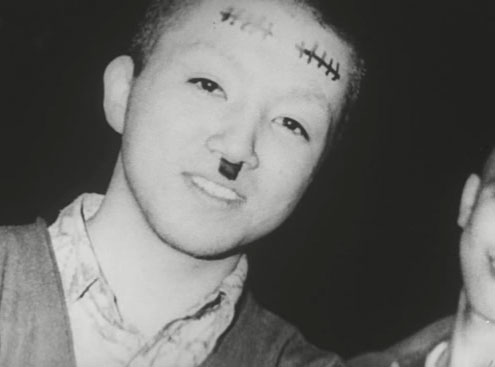
Drawing from the bosozoku phenomenon that referred to the rise of motorcycle gangs in the 70s, the documentary follows the exploits of one of those gangs.
The members of the gang in question are called “Black Emperors” and most of them are no older than 17. The first part of the film focuses on Decko, one of the leaders, and the troubles he has with the police and his parents. The second part presents a similar view of the lives of other members.
Mitsuo Yanagimachi directs a documentary that puts the spectator right in the middle of the gang’s shenanigans, as they ride in the night drinking, vandalizing, and even dancing at times.
The greatest asset of the title is its black-and-white cinematography that lingers between artful and humorous. The fact that five individuals were responsible for the magnificent outcome is a clear indication of the effort put in this department. In combination with the 70’s rock n’ roll soundtrack, this documentary becomes a truly great cinematic experience.
11. The Man Who Stole The Sun (Kazuhiko Hasegawa, 1979)
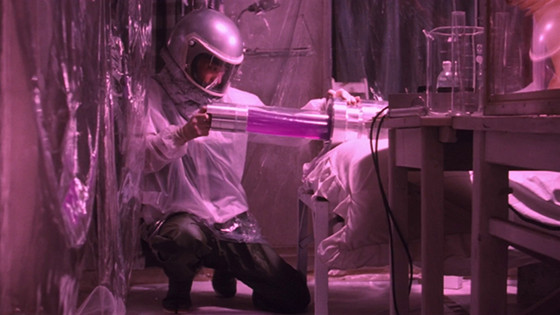
Makoto is a high school teacher who has decided to build his own bomb. Eventually he succeeds in making two, one that is real and one that acts as a decoy for him to blackmail the government into accepting his demands. However, his wishes are utterly unconventional, as he asks for things like the screening of baseball games without commercial breaks. In his efforts, he eventually has to clash with Yamashita, a policeman he had previously met.
Kazuhiko Hasegawa dared to direct a satire regarding nuclear terrorism, a subject that was considered taboo since the A-bomb. However, he was rewarded for his courage, as the film was a financial and critical success, despite the controversy it inevitably spawned.
The film borders on being preposterous, as it combines satire, history, action, and documentary elements with an absurd scenario. Nevertheless, Hasegawa keeps it from becoming nonsensical by injecting occasional elements of realism.
The two protagonists, Kenji Sawada as Makoto and Bunta Sugawara as Yamashita, are great in their parts, and their chemistry is evident.
10. The Yellow Handkerchief (Yoji Yamada, 1977)
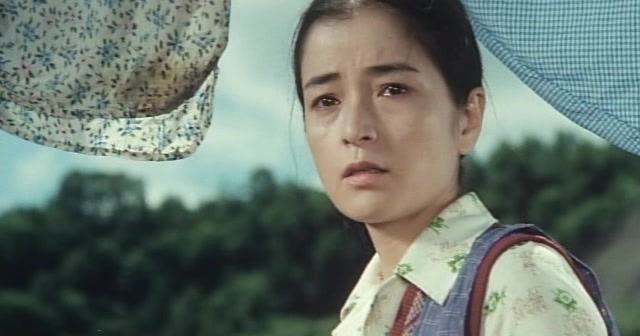
The film is inspired by a column series written by American journalist Pete Hamill for the New York Post in 1971, and was the winner of the first Best Picture award at the Japan Academy Prize.
This road trip story starts with Kinya, who has upgraded his car and is on the lookout for a female companion. Eventually he offers a ride to Akemi and she accepts. A bit further on the road, he picks up Yusaku, who seems to have a troubled past.
Yoji Yamada directs a film that initially functions as a romantic comedy, but quickly transforms into an affectionate human drama through the story of Yusaku, which is presented in sporadic flashbacks. Using long, wide shots, he also presents the beauty of the countryside, while he uses a masterful narrating technique, where drama, comedy, and silence succeed each other.
Ken Takakura as Yusaku gives one of his most iconic performances, portraying his character with subtlety and sensitivity.
9. Lady Snowblood (Toshiya Fujita, 1973)
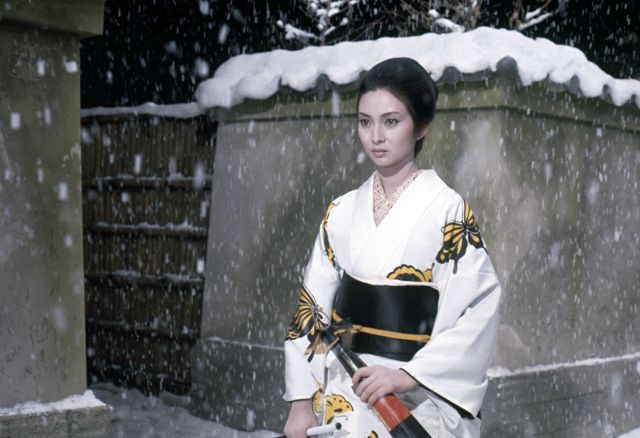
Quentin Tarantino turned the public’s attention toward this particular movie when he used several of its themes and settings to shoot “Kill Bill”. “Lady Snowblood” is based on the homonymous manga by Kazuo Kamimura and Kazuo Koike.
Kitahama Okono and three men, Takemura Banzo, Shokei Tokuichi and Tsukamoto Gishiro, assault a family, killing the husband and the son and raping Sayo, the wife. They continue raping her for days after the incident until Shokei brings her to Tokyo with him as his concubine. During sex, Sayo wounds him fatally with a knife, so she ends up in prison.
Sayo has nothing except revenge on her mind, and she ends up having sex with every guard that comes her way in an attempt to conceive a powerful son, who will exact revenge in her stead. Eventually, one of them impregnates her; however, she delivers a girl and dies during childbirth. However, shortly before that, she forces her fellow inmates to promise they will tend to the infant. Moreover, she makes them swear an oath that she grows up to take revenge in her stead.
Six years later, one of them hands over the little girl to a monk, Dokai, who trains her in swordsmanship and martial arts. After she completes her training, Yuki renames herself Lady Snowblood and sets out on the path of revenge.
Toshiya Fujita directs this movie and particularly excels in one aspect: He lets Meiko Kaji, the protagonist, shine with her presence. Additionally, he does an excellent work of adapting the manga.
Meiko Kaji, one of the priestesses of 70’s exploitation, found her apogee in this film with her “cold beauty,” scarce words, and great facial expressions.
8. The Inugami Family (Kon Ichikawa, 1976)
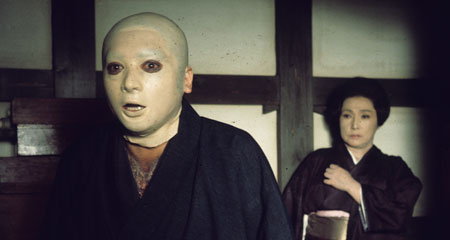
When nabob Inugami Sahei dies, he leaves his fortune to Tamayo, a woman with no relation with the family, on the condition that she marry one of his three grandsons. His will results in a blood feud among the members of the family, as they turn up dead, one by one. Furthermore, when Detective Kosuke Kindaichi comes to investigate the case, the onerous past of the family is revealed.
Kon Ichikawa directs a film that starts as a dark and adult-themed family drama, but eventually becomes a horror movie, as gore suddenly and unexpectedly makes an appearance. “The Inugami Family” also features magnificent visuals, benefiting the most from the fast editing and the set design that accurately portrays the postwar setting.
Based on Seishi Yokomizo’s homonymous novel, the film is much more than a simple entry in the J-horror genre, as it combines elements of drama with horror notions, creating a unique and highly influential mixture in the process.